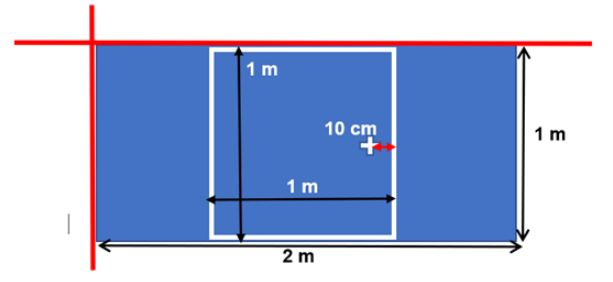The observation and data collection must rigorously follow the instructions outlined in this protocol to ensure objectivity and accuracy in data collection.
OBSERVATION ZONE
The area in which the evaluation through the Level I Observation Test: backward, lateral, and frontal falls will take place must be isolated so that students do not see their peers' responses to the exercise.
The test is conducted on a polyurethane foam mat (or similar material) with a density of 20 kg/m3, covered with plastic-coated canvas and an air expulsion system to cushion/absorb the energy generated by the fall. The dimensions of the mat are 100 cm x 200 cm x 5 cm.
The mat should be the same or have very similar characteristics for the pre-test, post-test, and retest. The mat is positioned so that its exact location can be reproduced, using indelible marks or pre-existing markings on the floor. When this is not possible, measurements will be used as reference points, based on existing parameters, to determine its specific location.
On this mat, a 1m * 1m square is marked with contrasting adhesive tape, with the width of the tape included within the square. In the center of the side closest to the controller, inside the marked square, the location of the height reference point is marked, ten centimeters from the outer edge of the square. The height reference point should be made of very soft material (like a sponge), with a height of 5 cm, and it should be large enough for the controller to visually check when to release the student (when they are nearly touching the reference point).

The purpose of the recording camera is to serve as a reference point for its location with respect to the recording area. The camera is placed on a tripod at a height of one meter and at a distance of three meters perpendicular to the midpoint of the outer edge of the mat. Each leg of the tripod should be marked on the floor using indelible markers or existing floor references. The typical recording frequency for a regular camera is usually between 25 and 30 frames per second (fps). However, there is also the option to record in high-speed (slow-motion), so cameras that record at 60, 90, 120, or 240 fps are available.
An observer's seat is necessary to allow the observer to position themselves alongside the camera, ensuring that their line of sight is at the same height as the camera's lens and perpendicular to the mat.
It's important to document and record the measurements and references used during the placement of equipment, both photographically and in writing, for potential future reference.